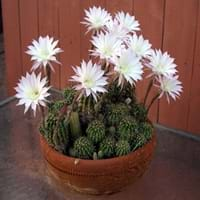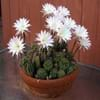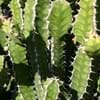Life Span
Perennial
Perennial
Type
Cactus or Succulent
Flowering Plants, Fruits, Herbs
Origin
North America, South America, Brazil
Australia, Tropical Indomalaya
Types
Peanut cactus
Cavendish Bananas, Lady Finger Bananas, Pisang Raja, Williams Bananas, Cooking Bananas
Habitat
Desert, Sandy areas, Semi desert
Subtropical climates, Tropical rainforest, Tropical regions
USDA Hardiness Zone
12-15
8-15
Sunset Zone
12, 13, 16, 17, 21, 22, 23, 24
H1, H2, 2a, 2b, 3a, 3b, 4, 5, 6, 7, 8, 9, 14, 15, 16, 17, 18, 19, 20, 21, 22, 23, 24
Habit
Upright/Erect
Upright/Erect
Flower Color
White, Yellow, Red, Purple, Orange, Rose
Burgandy, Ivory, Purple, White, Yellow
Flower Color Modifier
Not Available
Not Available
Fruit Color
Green, Orange Red
Red, Yellow, Yellow Brown, Yellow green
Leaf Color in Spring
Not Available
Dark Green
Leaf Color in Summer
Not Available
Green
Leaf Color in Fall
Not Available
Green
Leaf Color in Winter
Not Available
Green
Leaf Shape
Succulent
Cone shaped
Plant Season
Not Available
Fall, Spring, Summer
Sunlight
Full Sun, Partial Sun, Partial shade
Full Sun, Partial shade
Type of Soil
Loam, Sand
Clay, Loamy
The pH of Soil
Acidic, Neutral, Alkaline
Neutral, Slightly Acidic
Soil Drainage
Well drained
Well drained
Bloom Time
Spring
Early Fall, Early Summer, Late Spring, Late Summer, Summer
Tolerances
Drought, Dry soil, Full Sun, Heat Tolerance, Rocky Soil
Not Available
Where to Plant?
Container, Ground, Pot
Ground
How to Plant?
Grafting, Seedlings, Stem Planting
From bulbs
Plant Maintenance
Low
Medium
Watering Requirements
Average Water Needs, Do Not over Water, Never Over-water, Water once every two or three weeks, Water when top layer of soil becomes dry
Allow soil to be completely dry in between waterings, It cannot sustain wet-feet, Requires regular watering, Water every two or three days during warmer months
In Summer
Average Water
Lots of watering
In Spring
Average Water
Moderate
In Winter
Less Watering
Average Water
Soil pH
Acidic, Neutral, Alkaline
Neutral, Slightly Acidic
Soil Type
Loam, Sand
Clay, Loamy
Soil Drainage Capacity
Well drained
Well drained
Sun Exposure
Full Sun, Partial Sun, Partial shade
Full Sun, Partial shade
Pruning
Remove dead or diseased plant parts
Prune after harvesting, Remove dead or diseased plant parts
Fertilizers
fertilize in growing season, fertilize in summer, Potassium
All-Purpose Liquid Fertilizer
Pests and Diseases
Mealybugs, Scale
Anthracnose, Banana aphid, Banana mosaic, Black sigatoka, Bunchy top, Cigar end rot, Coconut scale, Moko disease, Panama disease, Rhizome rot, Yellow sigatoka
Plant Tolerance
Drought, Dry soil, Full Sun, Heat Tolerance, Rocky Soil
Drought
Flower Petal Number
Single
Single
Foliage Texture
Bold
Bold
Foliage Sheen
Not Available
Glossy
Attracts
Hummingbirds
Not Available
Allergy
Skin cuts
Anaphylaxis, Mouth itching, Throat itching
Aesthetic Uses
Beautification, Landscape Designing, Showy Purposes
Not Available
Beauty Benefits
Not Available
Not Available
Environmental Uses
Air purification, Food for insects, Versatility, Very little waste
Air purification
Medicinal Uses
Burns, Heals minor burns, Heart problems, High blood pressure, Wounds
Anemia, Antioxidants, Bronchitis, Diarrhea, Hangover, Heartburn, High blood pressure, Kidney problems, Menstrual Disorders
Part of Plant Used
Leaves
Flowers, Fruits
Other Uses
Decoration Purposes, Showy Purposes, Used as Ornamental plant, Used for its medicinal properties
Pulp can be used to make rope place mats and other goods, Used As Food, Used in paper industry
Used As Indoor Plant
Yes
No
Used As Outdoor Plant
Yes
Yes
Garden Design
Container, Houseplant, Rock Garden, Wall
Showy Tree
Botanical Name
ECHINOPSIS
Banana Tree
Common Name
Hedgehog Cactus, Sea urchin cactus
Banana Tree
In Hindi
हाथी कैक्टस
केले के पेड़
In German
Igel Kaktus
Bananenbaum
In French
hérisson cactus
Bananier
In Spanish
cactus de erizo
Banano
In Greek
κάκτος σκαντζόχοιρος
μπανανιά
In Portuguese
hedgehog cactus
árvore de banana
In Polish
jeż kaktus
Banana drzewa
In Latin
cactus
Musa sapientum fixa ligno
Phylum
Tracheophyta
Magnoliophyta
Class
Magnoliopsida
Liliopsida
Order
Caryophyllales
Zingiberales
Family
Cactaceae
Not Available
Clade
Angiosperms, Core eudicots, Eudicots
Monocotyledonous
Tribe
Trichocereeae
Not Available
Subfamily
Cactoideae
Not Available
Importance of Echinopsis and Banana Tree
Want to have the most appropriate plant for your garden? You might want to know the importance of Echinopsis and Banana Tree. Basically, these two plants vary in many aspects. Compare Echinopsis and Banana Tree as they differ in many characteristics such as their life, care, benefits, facts, etc. Every gardener must at least have the slightest clue about the plants he wants to plant in his garden. Compare their benefits, which differ in many ways like facts and uses. The medicinal use of Echinopsis is Burns, Heals minor burns, Heart problems, High blood pressure and Wounds whereas of Banana Tree is Anemia, Antioxidants, Bronchitis, Diarrhea, Hangover, Heartburn, High blood pressure, Kidney problems and Menstrual Disorders. Echinopsis has beauty benefits as follows: Not Available while Banana Tree has beauty benefits as follows: Not Available.
Compare Facts of Echinopsis vs Banana Tree
How to choose the best garden plant for your garden depending upon its facts? Here garden plant comparison will help you to solve this query. Compare the facts of Echinopsis vs Banana Tree and know which one to choose. As garden plants have benefits and other uses, allergy is also a major drawback of plants for some people. Allergic reactions of Echinopsis are Skin cuts whereas of Banana Tree have Anaphylaxis, Mouth itching and Throat itching respectively. Having a fruit bearing plant in your garden can be a plus point of your garden. Echinopsis has no showy fruits and Banana Tree has showy fruits. Also Echinopsis is not flowering and Banana Tree is flowering. You can compare Echinopsis and Banana Tree facts and facts of other plants too.





